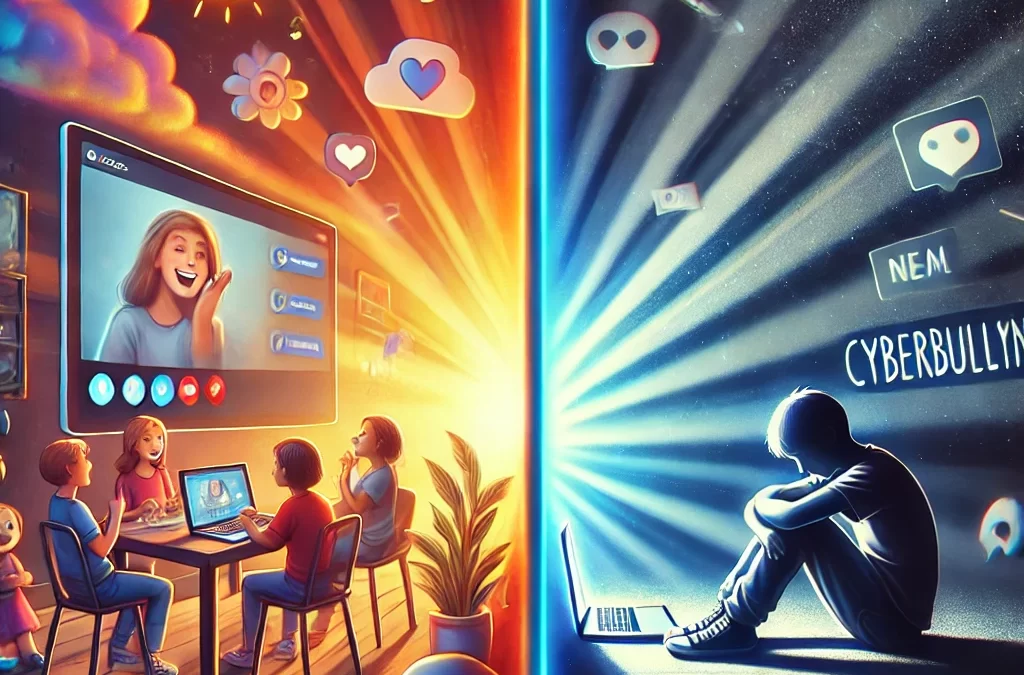Written by Social Edge Ambassador: Ishita Singh
We live in a time where the digital world has become a significant part of our daily lives. From connecting with loved ones to watching videos online, the possibilities for creativity and connection are endless. However, this digital age also brings with it a darker reality—cyberbullying.
Cyberbullying can take many forms, including vile comments, harassment, doxxing, impersonation, and even stalking. Among all age groups, children are the most vulnerable to this pervasive issue. Cyberbullying is not just an online inconvenience; it’s a serious problem with real consequences. Recognizing that harassment is harassment, whether in person or online, is the first step toward putting an end to it. Bullying extends far beyond school walls and can leave lasting scars.
Examples of Cyberbullying
- Stalking: Mia, an 18-year-old girl, has been receiving constant unwanted messages from a former classmate. He claims to know her address and details about her family. This invasion of privacy leaves Mia feeling unsafe and paranoid.
- Impersonation: Michael, a 15-year-old high school student, discovers that someone has created a fake social media account using his name and photo. The account posts offensive content, damaging his reputation and leaving him feeling upset and angry.
- Harassment: Lily, a 13-year-old, feels isolated and insecure after a group of classmates repeatedly sends cruel messages in a group chat, mocking her appearance and calling her names.
- Hate Speech: Bob, a 17-year-old who enjoys posting funny vlogs, faces humiliation and sadness as people leave nasty comments on his videos, making fun of him and his content.
Why Ending Cyberbullying Matters
Cyberbullying can have devastating effects on mental health, leading to serious issues such as self-harm, suicide, and pervasive insecurities. The developing minds of young people are particularly vulnerable. Since the frontal lobe, responsible for decision-making and emotional regulation, doesn’t fully mature until around age 25, early exposure to cyberbullying can cause trauma and influence future decisions.
Studies show that nearly 42% of kids have been cyberbullied through mean comments, and about 21% have received threatening messages or emails. Most of us can recall experiencing or witnessing rumors in school and the anxiety of wondering how others perceive us. Cyberbullying magnifies this, as it extends beyond school and is visible to a global audience, making the judgment of others inescapable. Worse, bullies often act with the knowledge that their actions carry no immediate consequences.
What Can Be Done?
While there’s no foolproof way to keep children completely offline, there are steps parents and caregivers can take to mitigate the risks:
- Encourage Open Communication: Foster a safe space where children feel comfortable discussing their online experiences. Teach them to recognize and report cyberbullying and, most importantly, not to engage in it.
- Promote Offline Activities: Encourage kids to play outside, join sports teams, or engage in creative hobbies. Making offline activities fun can naturally reduce their time online.
- Set Limits and Monitor Usage: Establish screen time limits to prevent excessive online activity. Familiarize yourself with the privacy settings of apps like Instagram, which now offer features like “teen accounts,” private profiles, and sleep modes to limit usage after 10 PM. Ensure your child’s account accurately reflects their age to block inappropriate content.
- Build Self-Esteem: Encourage activities that nurture your child’s talents and social skills outside the digital world. A strong sense of self can help them resist the negative effects of bullying.
A Shared Responsibility
The growing issue of cyberbullying must end before it affects more lives. By encouraging kindness and speaking out against hate when we encounter it, we can help make the internet a safer, more supportive space. Each of us can contribute to a society where social media fosters respect rather than judgment and harm.
Ending this crisis requires collective effort, and it begins with choosing to act with compassion and integrity online. Let’s take this step together toward a kinder digital future.

